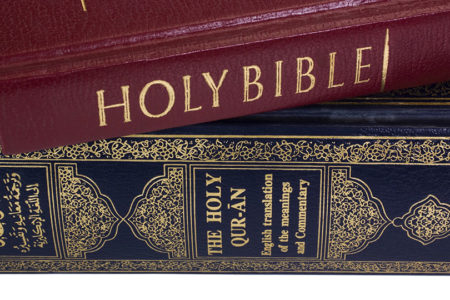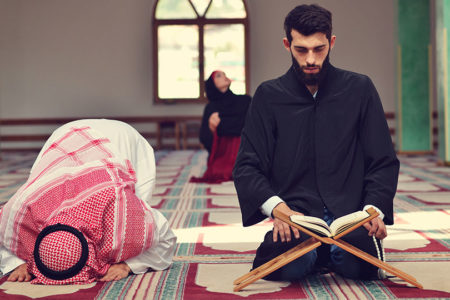Bar Mitzvah
On Saturday morning, June 11, 1966, I walked from the stage of the synagogue to the platform (bema) where the Torah lay open. Following in the tradition of my father and grandfather, I had prepared for this event since early childhood. As it had for multitudes before me, the event signaled a change in my standing in the Jewish community. I would no longer be considered innocent, for I would take on full religious responsibility. I would no longer be considered a child, for, at the moment when I read from the Holy Scripture, I became a man in the traditions of Judaism. That day, more than 27 years ago, marked my bar mitzvah, the day I became a son of commandment.
A religious rite practiced by the Jewish people as far back as the 13th century, the concept of the bar mitzvah can be traced to the pages of the Talmud. It was there that religious accountability was bestowed when a boy was physically becoming a man. The Jewish Scriptures know no such rite. The only age of accountability found in the Torah is in the first chapter of Numbers, where all men 20 years and older were counted for service in the army. Today, the bar mitzvah is one of the most important events in the life of a Jewish man.
Most bar mitzvahs today involve a synagogue service and a reception. Actually, the ceremony involves three parts: the Release (called Shepetarni), the Sermon (called Derashah), and the Meal (called the Seudah). The emphasis on any or all of these parts is determined by the family and therefore varies from one family to the next.
The Release involves the bar mitzvah boy and his father. To begin, the father prays, “Blessed be He who has relieved me of this obligation” (Midrash Genesis 63:10). Henceforth, all the improprieties and sins the young man commits will fall on him and not on his father. Next, the young man receives the call (aliya) to the bema to read from the Torah (the five books of Moses) and the Haftorah (the prophets). He also recites various blessings as he leads the congregation in worship. As the boy reads in flawless Hebrew, his father, mother, and the remainder of his family kvel (look on with pride), doubtless reflecting on the months and years of preparation that have culminated in this day.
Over the years, the Derashah has changed from a sermon, or expounding over the Scriptures and Talmud, to a speech in which the bar mitzvah boy thanks his parents and the others who have helped him arrive at this event in his life. The change reflects a sad trend away from the demonstration of a capable young man handling the Scriptures and the Writings to a recognition of family to the invited guests.
The third part of the ceremony, the festive Meal, was originally a simple time of refreshment and celebration. Today parties—complete with dance halls, bands, and elaborate catered meals—are more the rule than the exception. Some rabbis have commented that they see more bar (drinking) than mitzvah (commands or good deeds). During this time gifts are given to the young man in recognition of his achievement. At the time my father and his peers celebrated their bar mitzvahs (in the 1920s and 1930s), a fountain pen was a common yet outstanding gift, symbolizing adulthood. Today it is not uncommon for the bar mitzvah boy to receive thousands of dollars, a healthy boost for his college fund.
Once he has become a son of commandment, the young man has four privileges bestowed upon him. First, he is counted with the men to make up a minyan (the group of ten men needed to conduct a service of public worship). Second, he puts on phylacteries (two small square leather boxes containing slips inscribed with scriptural passages and worn on the left arm and the head) each morning for the rest of his life as he recites the morning prayers. Third, he can be called upon at any time to go up (aliya) to read from the Torah. Fourth, he can now be a part of the Jewish court (bet din). Although these privileges are now part of his life, the young man probably will not exercise them, with the exception of the minyan. The majority of Jewish men cease from synagogue activity upon completion of their bar mitzvahs.
For many Jewish families, the bar mitzvah is very important. It is not uncommon for families to fly to Israel to celebrate the occasion there. Bar mitzvah services take place at the Wailing Wall (or Western Wall) every Monday and Thursday, and Jews from around the world can be seen in the joyous celebration. Many Israeli Jews celebrate their bar mitzvahs at Masada, a fortress in the Judean desert that symbolizes Jewish freedom and determination.
Conservative and Reform Jews have broadened the bar mitzvah to include girls. Because girls mature faster than boys, the bat mitzvah (daughter of commandment) is celebrated when a girl turns 12. There are no bat mitzvahs in Israel, where the stem religion is Orthodox.
The original purpose of a bar mitzvah was to recognize the years of training in the Word and to celebrate another man now able to understand and devote himself to the Scriptures. With this background, we can gain insight into the importance of training a child in the way he should go (Prov. 22:6) and, perhaps, be encouraged in the raising of our own families.








